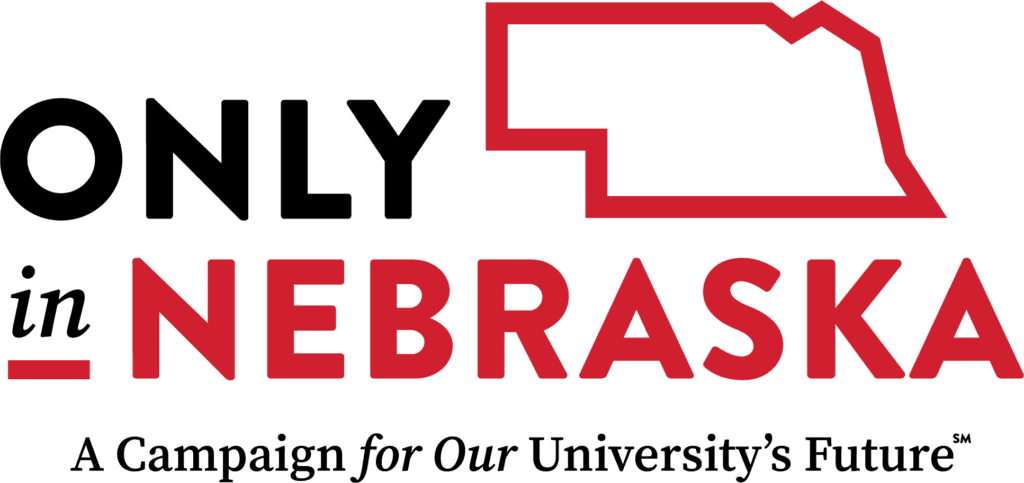Recent grad thanks donors for an invaluable resource
Recent grad thanks donors for ‘an invaluable resource’
International Quilt Study Center & Museum exposes student to untold stories documented in needlework.
Lions and dragons and beasts of all kinds …
And all of them stitched together on a quilt made of silk by the hands of some unknown human long, long ago.
The quilt is one of the oldest on Earth. It was made in the Mediterranean area around 1600 A.D. — not long after the word “quilt” first appeared in English writing. The quilt is one of thousands now archived and preserved for generations to come inside the University of Nebraska-Lincoln’s renowned International Quilt Study Center & Museum (IQSC&M).
The quilt is one of young quilt researcher Sarah Walcott’s favorites.
“It’s just kind of mind-blowing to see an object that was created — and the handwork done — by somebody who has been gone for hundreds of years,” she says, “and their work still exists and tells a story.”
This past May, Sarah received her master’s degree in textile history with an emphasis in quilt studies at UNL. She’s one of many grateful people who’ve benefited over the years from the IQSC&M, which next year will celebrate the 10th anniversary of its architecturally significant building on East Campus, called Quilt House, and which this year is celebrating the 20th anniversary of the first major gift that started it all – the gift of more than 1,000 quilts and an endowment by Nebraska natives Ardis and Robert James. Their son Ralph is a trustee of the University of Nebraska Foundation.
For her thesis exhibition, Sarah used the museum’s collections to research the hand-needlework of 19th-century quilts and how the “cult of domesticity” and a push for women’s education at the time came together to create some of the most amazing American hand-needlework in history.
She took photographs of the white-cloth backs of some of those quilts to show the incredible details that usually remain unseen from the front and unknown, just like the quilt-makers themselves.
“You sometimes miss these incredible details (on the backs), so I took photographs very close up of the quilting details and used those to illustrate the ways that women’s work can often be invisible.”
Sarah began working at Quilt House as a volunteer and intern four years ago. She recently was hired as a collections assistant, and her photos of those quilt backs now hang on the walls of Quilt House.
“When I first started working here, I was just really struck by the number of untold stories that I felt were contained within the building and the way those stories are told so different in various exhibitions,” she says. “I feel we are working to tell the stories of women and the stories of other marginalized people through our exhibitions.”
Every quilt, it seems, has a story even if it remains unknown it seems, she says, like the story of that old silk piece with all kinds of beasts.
And every person, it seems, has a quilt story.
Hers?
Her grandma taught her to quilt, she says, when she was 9 and a kid growing up in Kearney, Nebraska. Or tried to.
She laughs.
“It didn’t go super well. … ”
Her grandmother was an amazing quilter. She’d traveled the world well into her 80s, bringing back interesting fabric from each trip. Sarah inherited her grandmother’s fabric and sewing machine when her grandmother moved into a nursing home five years ago.
“So I again tried to learn to quilt — in her honor — but I quickly realized that other people’s quilts were much more interesting to me than anything I could make on my own! And that was part of how I came to the quilt studies program.”
Sarah likes to think about those unknown humans who made the quilts. They made them for warmth and protection, she says, and probably also to bring beauty into their homes. They made them with their hands and their hearts and maybe with the hope that they’d be passed on for generations to come.
Sarah is grateful to the James family — and to all University of Nebraska donors — for their generosity to students like her. Ardis James passed away in 2011. Bob James lives in Stamford, Connecticut.
Their gift, Sarah says, will help generations to come, too.
“If Bob were here in front of me, I would tell him thank you,” Sarah says. “I would tell him how grateful I am for the opportunities that museum and study center have afforded me in the last four years. And now to be employed here is just about the best thing I can think of. For students like me, the quilt studies center is an invaluable resource.”
She thinks the people who made these quilts would, if they could, thank the James family, too.
“Many of them would probably be shocked that objects that they made from their own personal use have become appreciated objects for many, many people and are researched and studied and being used as almost cultural documents.
“I think they would be very surprised, but also probably very grateful, too.”
Needs and opportunities are ever-changing at Nebraska, and through the N Fund, you choose to support what you think is most important. The N Fund allows alumni and friends to contribute to priority funds that support specific Nebraska colleges, as well as broader areas of need like student scholarships, faculty development and campus libraries.





